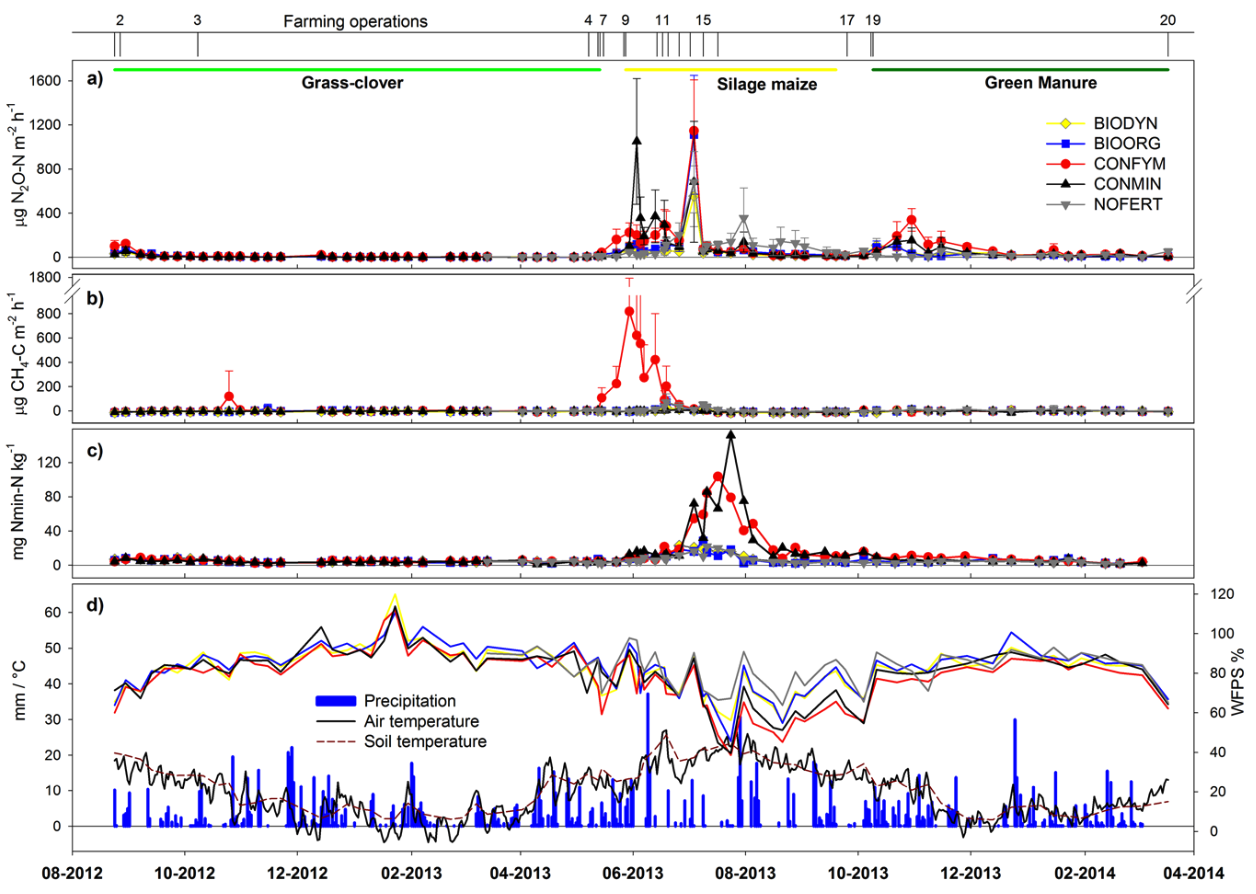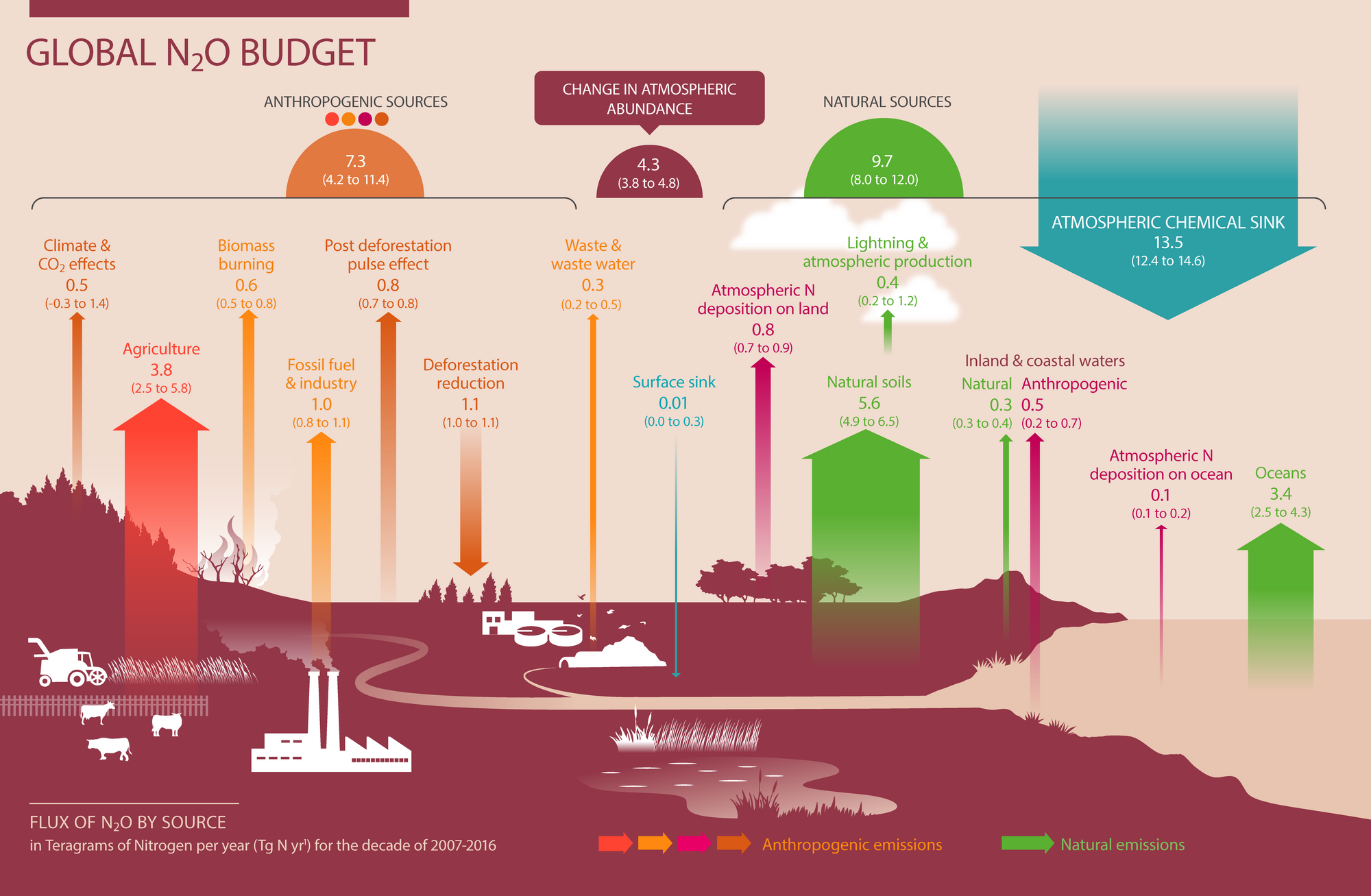DOK trial shows that biodynamic agriculture releases fewer greenhouse gases
Whether through fertiliser production or field work, agricultural practices release greenhouse gases. Using the DOK experiment, Skinner et al. investigated how agricultural soils with different management regimes release nitrous oxide (N2O) and methane (CH4) into the atmosphere. In addition to biodynamic and organic farming, comparisons were made between two further farming systems as well as unfertilised control plots. According to the study hypothesis, it was expected that the two organic farming systems would release less nitrous oxide per hectare but would have higher emissions in relation to yield. The results confirm that biodynamic and organic farming systems can help to reduce greenhouse gas emissions in the agricultural sector.
Agriculture releases large quantities of greenhouse gases, around 10–12% of global CO2 equivalents. About a third of this comes from soils, mainly in the form of nitrous oxide and methane. In recent decades, the ecological consequences have increased alongside increasing yields. More environmentally friendly approaches such as biodynamic agriculture and organic farming are therefore essential for future food production. Although these methods produce slightly lower yields, they make up for this with a range of ecosystem services.
Since the 1970s, four different agricultural systems have been analysed in the DOK trial. The long duration of this series of experiments makes it possible to compare the systems with each other and draw valuable conclusions. An overview of the DOK trial can be found here. The terms BIODYN, BIOORG, CONMIN, CONFYM and NOFERT are also explained there.
Figure 1: Measurement data over the course of the study period. (a) nitrous oxide, (b) methane, (c) mineralised nitrogen, (d) precipitation and temperature. The highest emissions occurred in the course of soil cultivation and fertiliser application during the cultivation of silage maize.
Eighty six samples were taken over a period of 571 days. During this time, the sampled plots had the crop rotations clover, silage maize and green manure. The following terms help to better categorise the study results:
- Area-scaled: The results refer to the arable area. Example: "System A releases less methane per hectare than system B."
- Yield-scaled: The results relate to the crop yield. Example: "System B releases more nitrous oxide per tonne of crop yield than system A."
Over the entire study period, the area-scaled emissions of nitrous oxide from biodynamic soils were the lowest. The organic areas had comparable emissions, while the emissions from CONMIN and CONFYM were higher. Overall, the two organic systems released around 40% less nitrous oxide than the two other systems.
Regarding the yield-scaled results, the authors of the study hypothesised that the biodynamic areas would perform less well as they have a lower yield per unit area. This was not confirmed. While CONMIN and CONFYM generated around 27% more yield than the two organic systems, the biodynamic system showed the lowest nitrous oxide emissions and was the only one with significantly lower values than the unfertilised control trial.
Figure 2: The global nitrous oxide budget. In a stable system, atmospheric inputs and outputs would be balanced, but there is a net accumulation of nitrous oxide in the atmosphere, contributing to the greenhouse effect. Source: From Global Carbon Project - https://www.globalcarbonproject.org/nitrousoxidebudget/index.htm, CC BY 4.0, https://commons.wikimedia.org/w/index.php?curid=97239523
The results for methane are less clear. The CONFYM system (fertilised with conventional fertiliser and livestock manure) was the only one to show high methane emissions in the area-scaled comparison, while the biodynamic, organic and minerally fertilised plots actually showed slightly negative methane emissions, meaning they were able to absorb methane. A comparison of the two organic systems with CONMIN and CONFYM showed no statistically significant differences.
The biodynamic and organic farming systems were also compared with each other. This showed that the biodynamic system released less nitrous oxide (N2O), both area-scaled and yield-scaled. This was despite the fact that the two systems received practically the same amount of plant-available nitrogen (N).
The study shows that biodynamically farmed soils emit the fewest climate-relevant gases. In addition, biodynamic agriculture is more sustainable and provides more ecosystem services (e.g. better water retention in soils and more soil microorganisms). It is therefore a potential candidate for the climate-friendly agriculture of the future.
An in-depth article for this study report can be found here.
Correction from 30.04.2024
Paul Mäder, Head of the Department of Soil Science at FiBL and direct contact person for the DOK trial, has kindly pointed out a few errors in this article. Based on his input, information on the agricultural systems analysed has been adjusted.
Sources and further links to this article
- Original study: Skinner, C., Gattinger, A., Krauss, M., Krause, H.-M., Mayer, J., van der Hayden, M.G.A., Mäder, P. The impact of long-term organic farming on soil-derived greenhouse gas emissions. Scientific Reports 9, Article 1702 (2019) https://doi.org/10.1038/s41598-018-38207-w
- Image credits
- Figure 1: Taken from the original study
- Figure 2: Global Carbon Project - https://www.globalcarbonproject.org/nitrousoxidebudget/index.htm, CC BY 4.0, https://commons.wikimedia.org/w/index.php?curid=97239523

